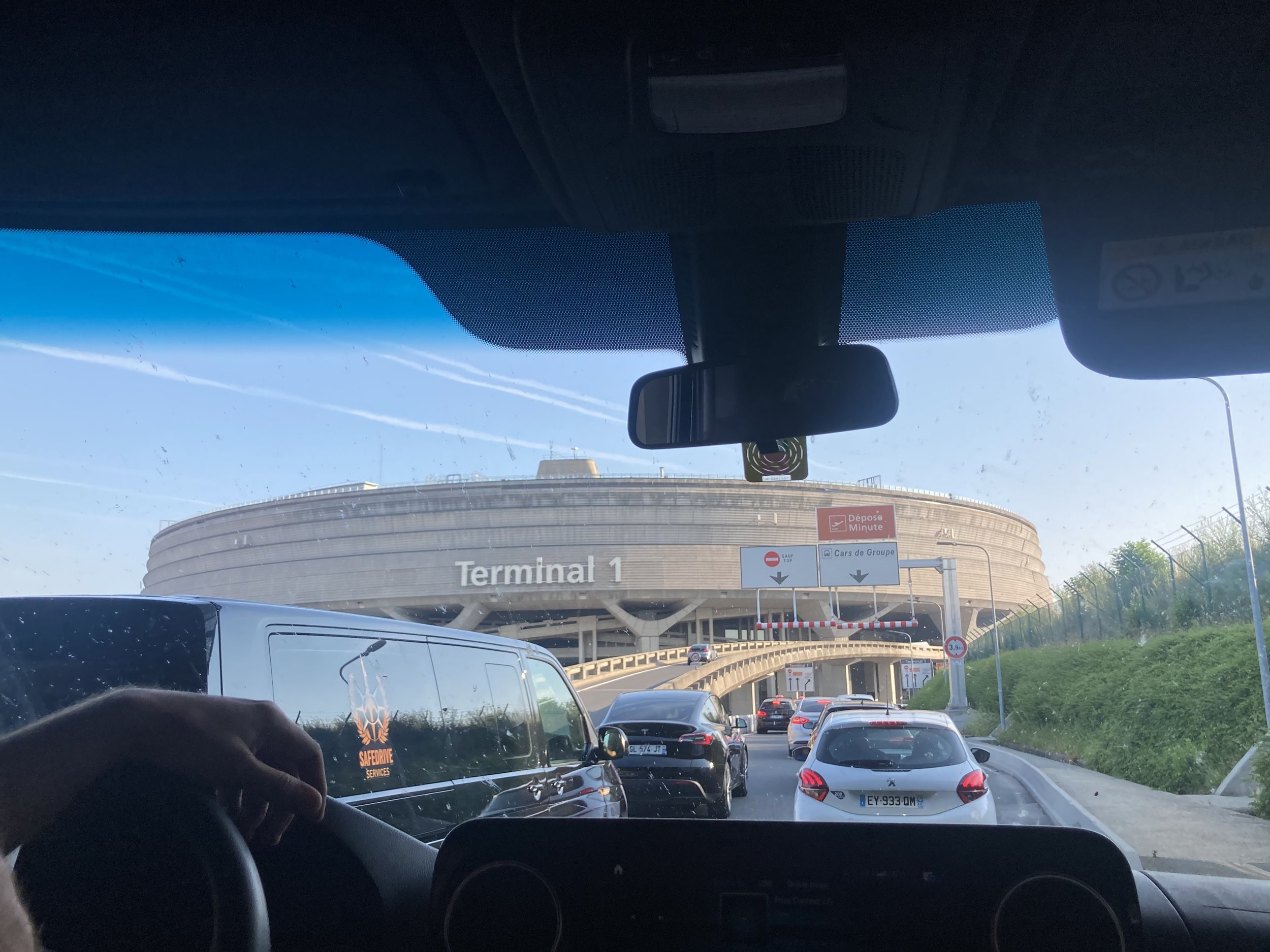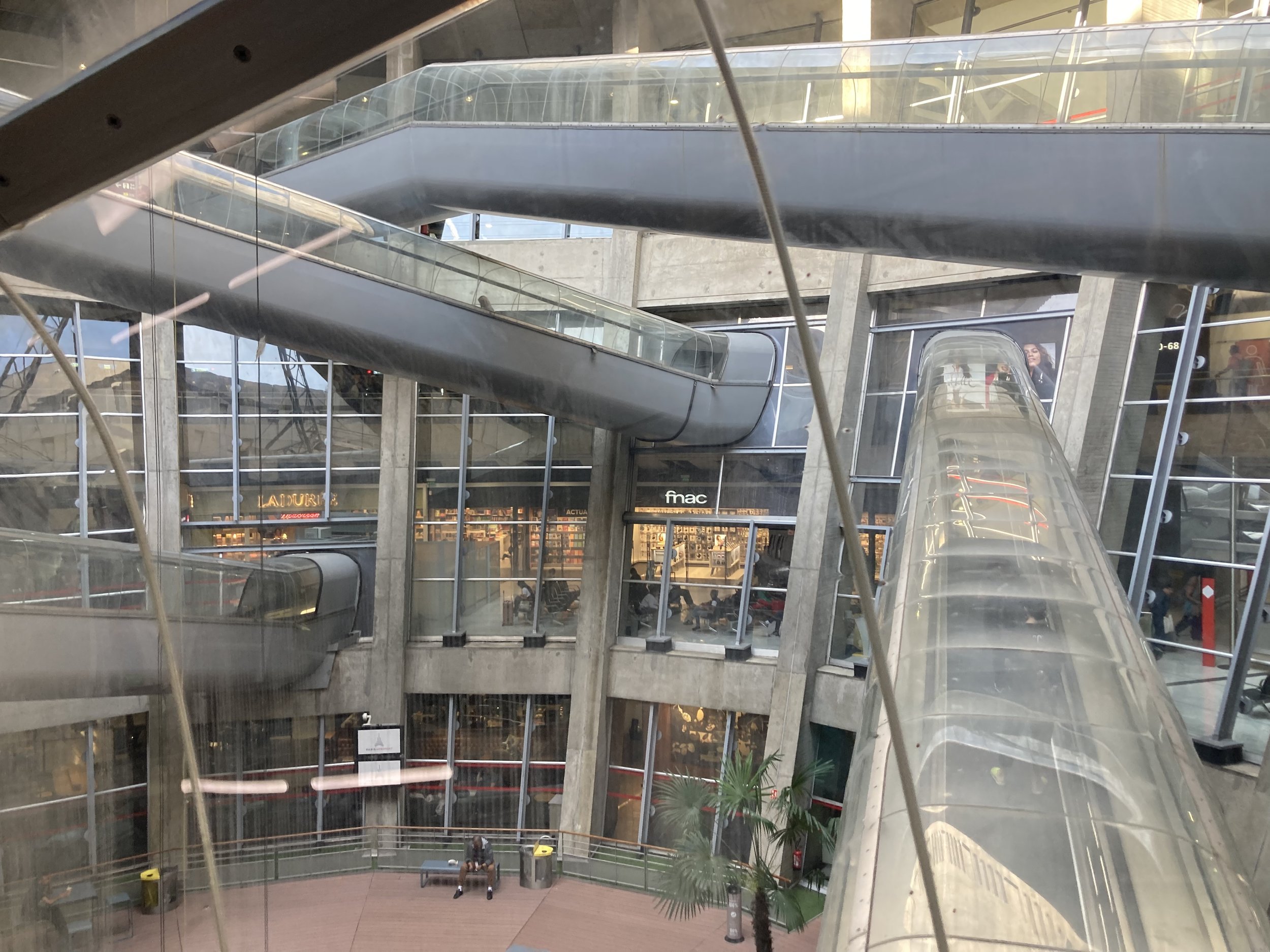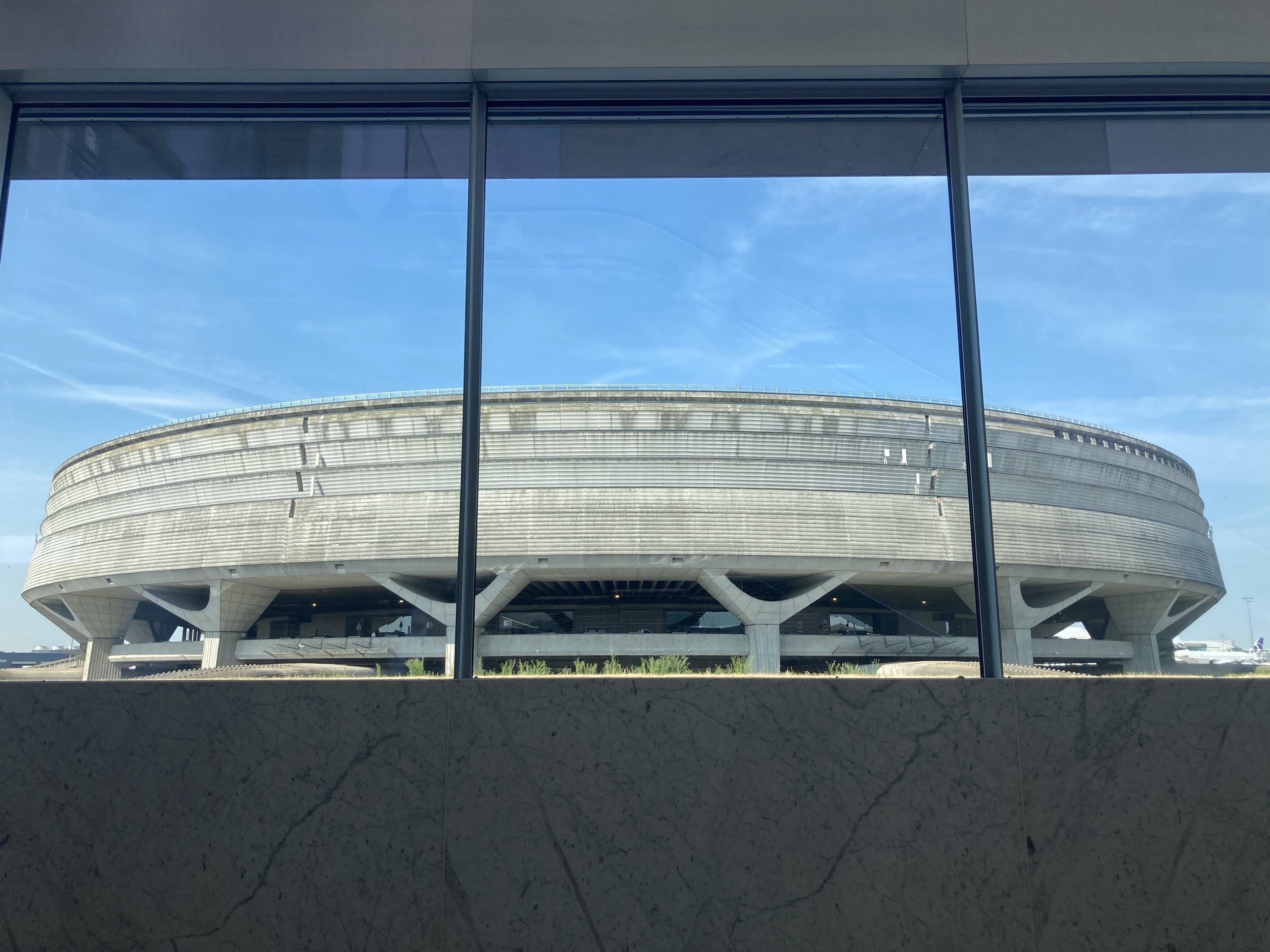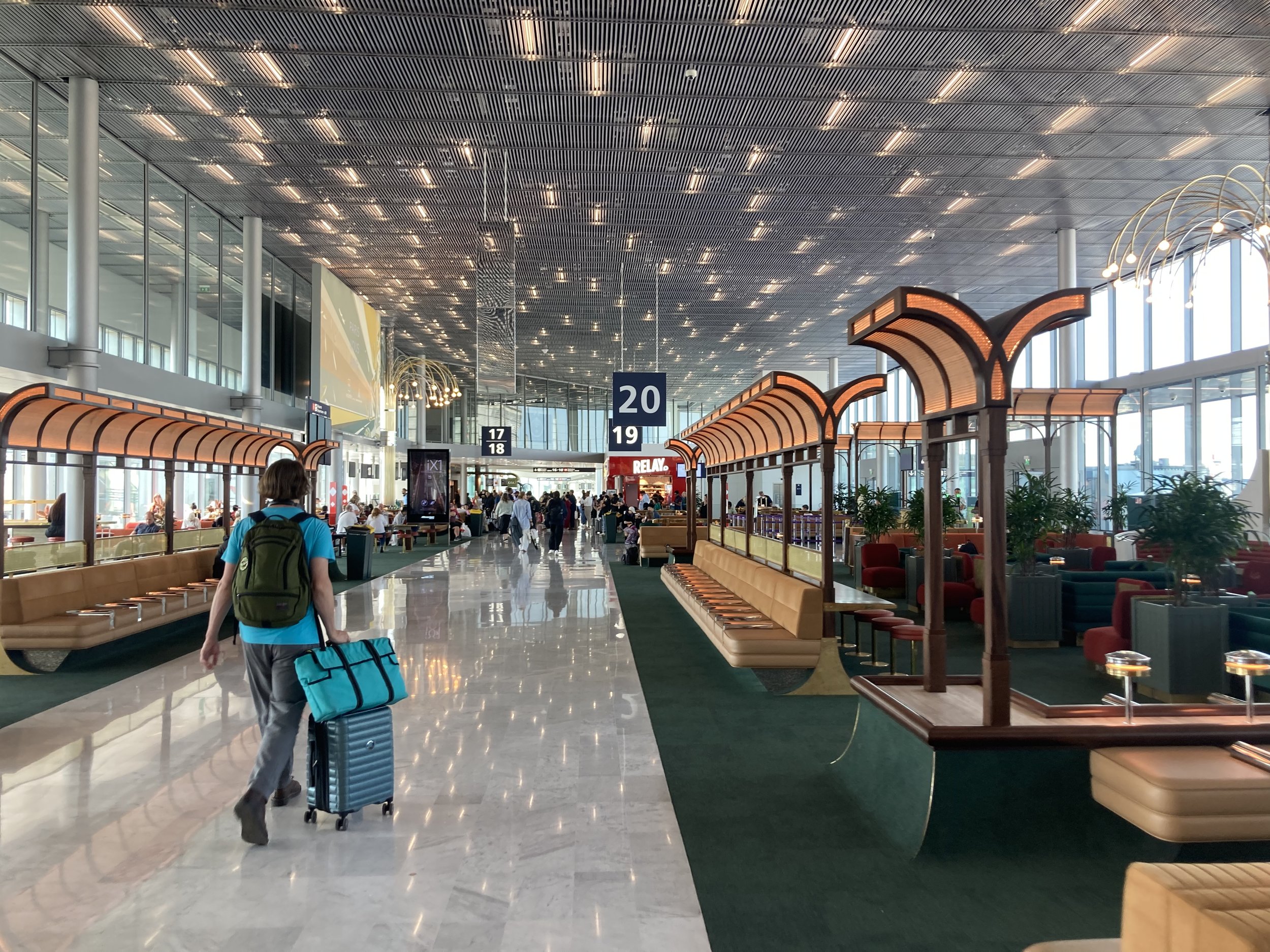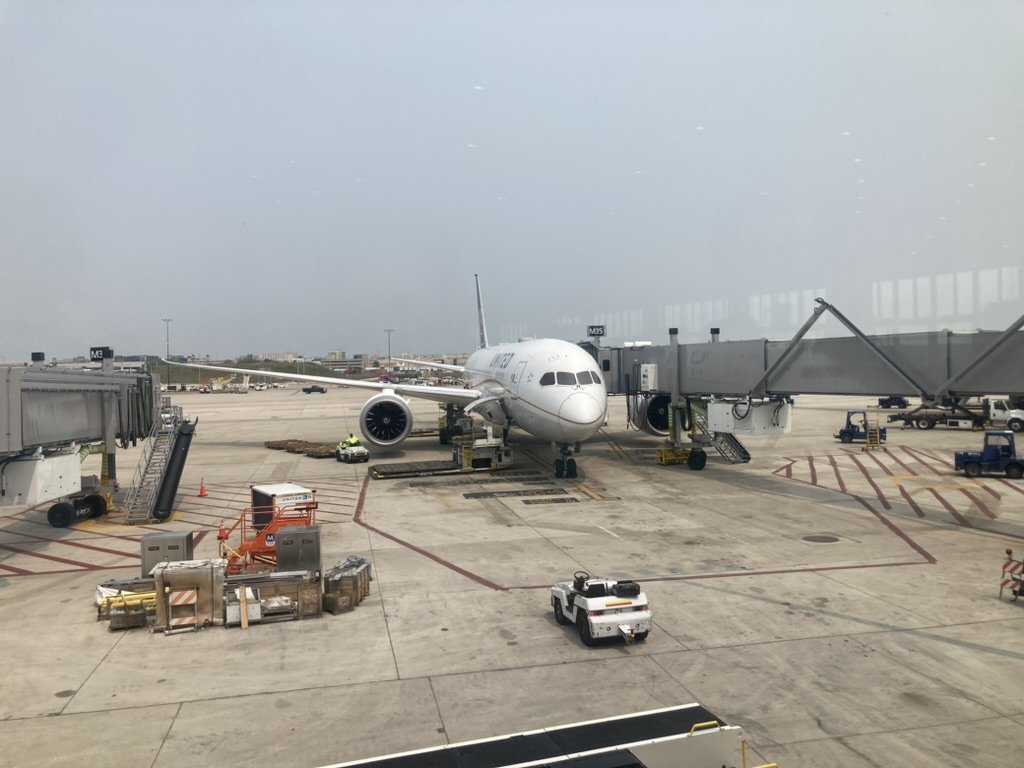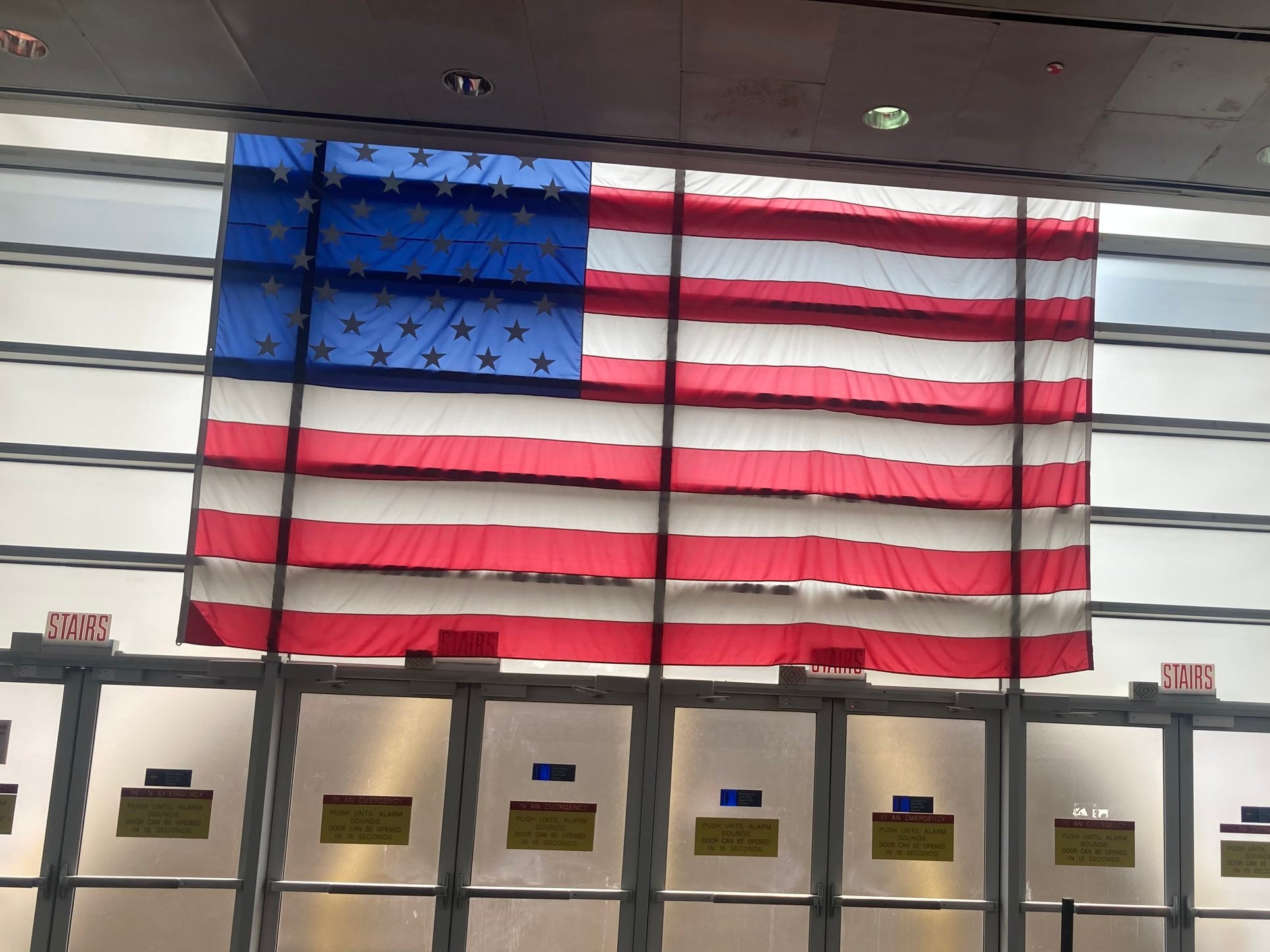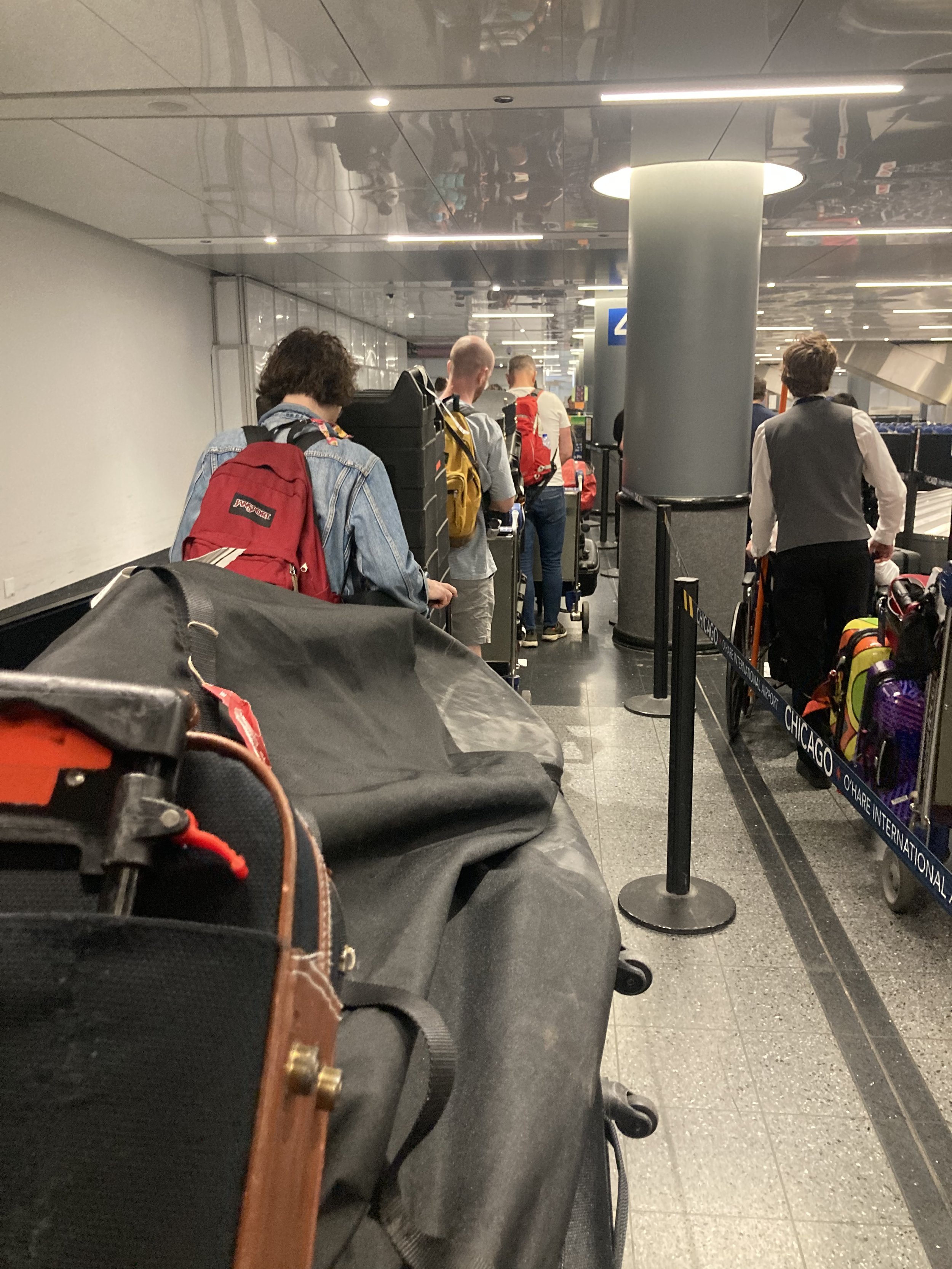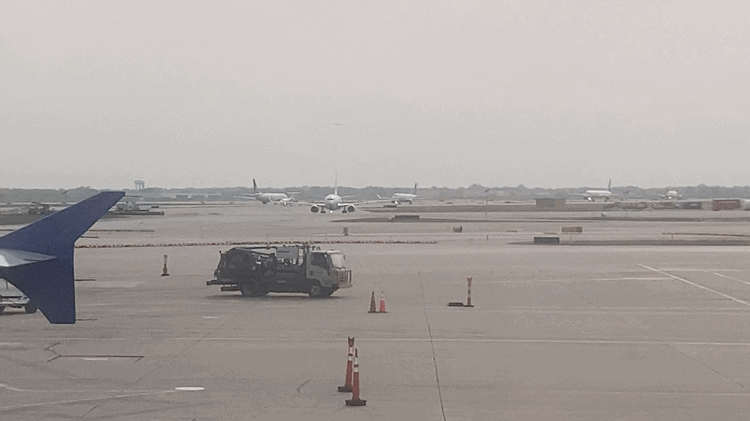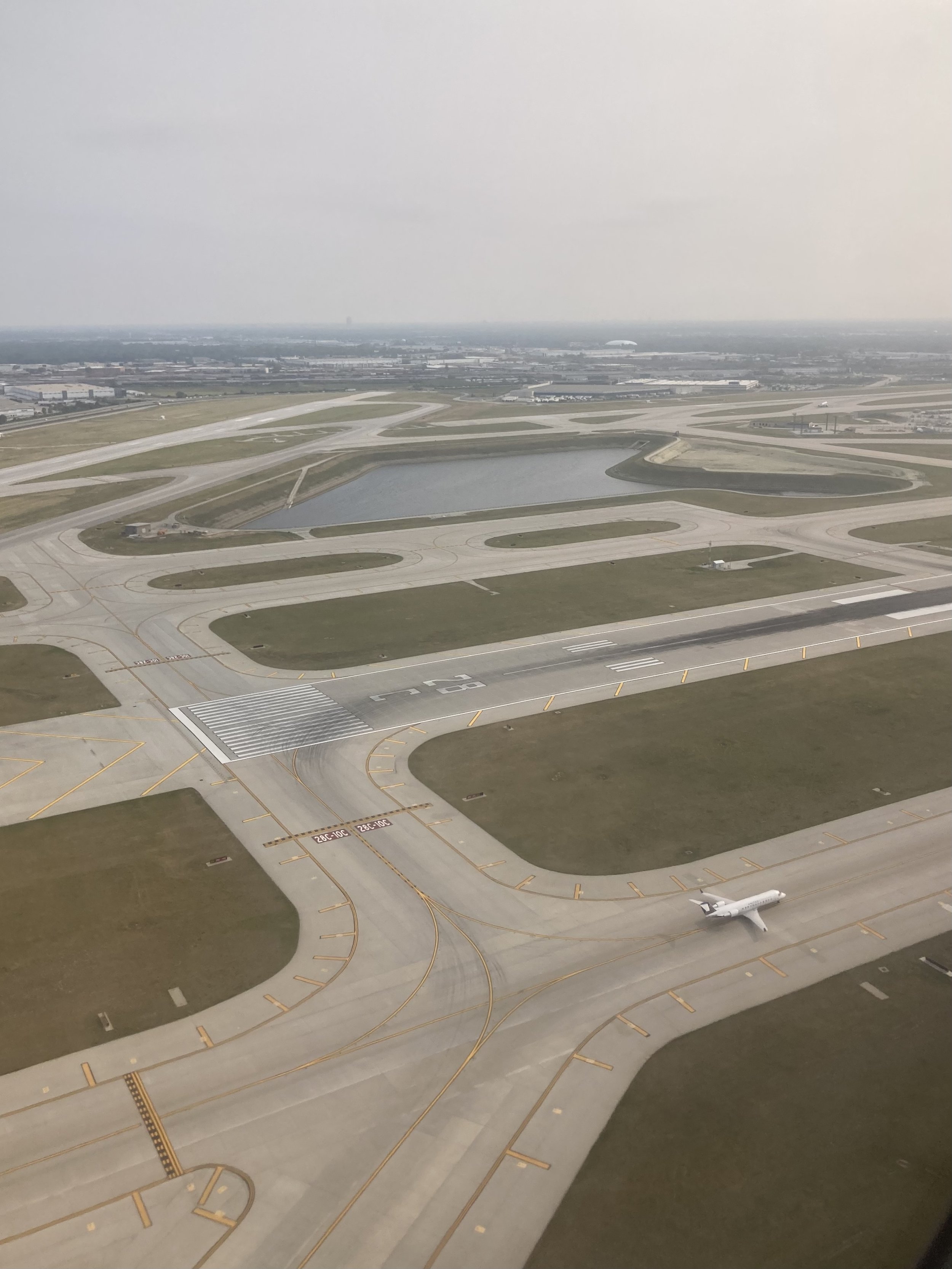Day 24: Travel day
Welcome
Yesterday we crossed the Atlantic to prepare for a week of shows in the US.
A hard 8am in the van call time was imposed on this very important travel day. There was no time for pastries as we drearily piled into our seats and tried to steel ourselves for the chaos that was sure to be present at Europe’s third busiest airport. Five minutes later we set eyes upon the post-apocalyptic Colosseum that is Aéroport de Paris-Charles-de-Gaulle Terminal 1, clearly labelled in the Frutiger typeface that was commissioned in 1970 specifically for all the signage at this newly built airport.
We said our goodbyes to Mathias, our new friend, who has worked incredibly hard for us and proved to be an invaluable asset the last couple of weeks. The van was cleared out and then he departed for Brussels, to return the vehicle and then head straight out on tour with his own band. Inside the terminal it was a maelstrom. I use this particular metaphor is because it suits the circular design of the terminal which sucks in passengers from the outer doors, funnels them through a central spout, and then expels them in all directions through a series of long underground tunnels. It took quite a while to find any luggage carts, dispensaries of which were completely lacking in our arc of the terminal. About forty-five degrees of exploration later though we found a huge deposit from which we collected a quintet of carts to haphazardly stack with our collection of suitcases, guitar cases, pelicans, and fish.
Our first task was to get the carnet stamped, for this we had to enter the terminal, weave through dense crowds in quite a narrow concourse, and find an elevator up to the arrivals level where the customs office was located. Thankfully the customs officer that Jonathan dealt with was highly competent and we were on our way back down to the departure level in only a few minutes. The supposed efficiencies gained by the circular layout of this building which is designed to house a different function on each floor - in the most literal implementation of vertical integration - felt offset by the stressful feeling of being confined inside this concrete infinity, a futuristic travel hellscape spawned in the golden years of the jet age.
This tangle of escalators features on the cover of the Alan Parsons Project album I Robot.
Looking back at Terminal 1 from our satellite building. Originally the plan was to build five of these circular terminals, the design of which was theorised to equalise and minimise walking distances for passengers.
We spotted our United Airlines check-in counter as it became visible on the horizontal horizon after several minutes of navigating a dense sea of bodies on the departures floor. The process of weighing our bags was slow but steady on this day, and although it took a while to get everything tagged, we were rewarded when the payment card reader was out of action, and we didn’t have to pay any oversize fees. Now we entered the core of this concrete cake and rode one of the escalators that crisscrossed its central shaft. This escalator had a rubber belt instead of steps, and it felt fun and bouncy underfoot. The next level housed passport control, a checkpoint that then expelled us on a radial path, directing us into an underground concrete tunnel that led to one of the seven satellite buildings that are equipped with boarding gates. These spaces have all been recently refurbished and the Mid-century Modern look of this boarding lounge felt brand new. I was somewhat disappointed however by the design choice which required me to ride in an elevator to use the bathroom and fill my drink bottle.
Thankfully we just had time to stop for breakfast before the flight and I was able to enjoy a banana-berry smoothie and a Quiche au Fromage that featured spinach and tomato on its interior.
Our flight boarded right on schedule. We were all settled into our seats, and ready to fall asleep when there was announcement from the pilot: 'there was a mechanical issue with the spoilers on our Boeing 787 Dreamliner, and were being directed to park at another gate so mechanics could address the problem. I think I fell asleep at this point and I’m not sure what happened, but I gather that the problem was eventually resolved, and we left the tarmac an hour behind schedule. At some point I attempted to put on a movie – an attempt that failed – and my screen carried out a flickering animation for the rest of the flight.
Descending into Chicago’s O’Hare Airport we knew that we didn’t have much time to play with, and we had a tricky transfer to execute. As soon as the door opened we hurried off the plane and began a rapid power walk on the way to immigration, cursing the travellers standing two abreast on the travellators as we moved along at our most urgent pace. The line at passport control wasn’t too bad, luckily. We only queued for ten minutes and then we were through to baggage pickup. This is where we split up. Jonathan headed straight to the customs office to begin the carnet process, I headed to the main luggage belt, and Liz headed to oversize to wait for our huge guitar cases. By the time we had loaded up our trolleys Jonathan was standing with a customs officer and gesturing at us with the completed carnet, ready to proceed into the next sector.
The baggage recheck belt welcomed all thirteen of our luggage pieces and with that simple task completed all that remained was to make it to our gate on time. O’Hare’s Airport Transit System helped us greatly by providing a fast, convenient and fully-automated passenger transport to the next terminal, and from there we were back on foot, moving at a light trot which brought us to our aircraft just before they closed the gate.
The five of us were all in the back row of our Airbus A320; maybe the first time we have all been seated in the same row. We were soaked in sweat, hungry, and tired, but we had made it, so we took a celebratory photo.
A couple of minutes later we heard a message over the intercom. There was a problem with the fuel transfer system and our flight would be delayed by 45 minutes. This time though we were allowed to disembark from the aircraft, and we seized the opportunity to go and find a coffee and a snack.
There was plenty of time to observe the busy traffic on the ramp of O’Hare International while we waited for our plane to get fixed.
Finally, we rotated off runway 10L and began a climbing turn, setting a course southwest towards Kansas City. This final leg of our trip was a mere hour and it whizzed by. The 300mls of proper American filter coffee I had consumed was doing its job and I had a productive flight, producing a word count in the mid to high hundreds. I was almost disappointed when we began our landing approach. It was a fine evening that welcomed us to Kansas, and we made a gentle touchdown followed by a short taxi run, bringing the aircraft to a halt outside our gate at 6.30pm local time. We took our time disembarking and slowly walked through the brand-new terminal of Kansas City International, which was broad, clean, and very quiet.
Our hotel was not far away, but just awkwardly far enough to require a vehicle, or two vehicles in our case because the rental agency didn’t have any vans available. We stacked our gear into the frustratingly small boots of these enormous vehicles and drove the few miles to our hotel, which was innovatively named Home2 Suites. Floor space is not something that this hotel is short on, even by American hotel standards, and we all enjoyed the reduced danger of colliding with any of the furniture.
There weren’t many dinner options in the area, so we settled on the devil that we knew, and it was of course, Chilis. A grand sunset margarita accompanied a very heavy meal and it was a nice winddown to this long and exhausting day.
